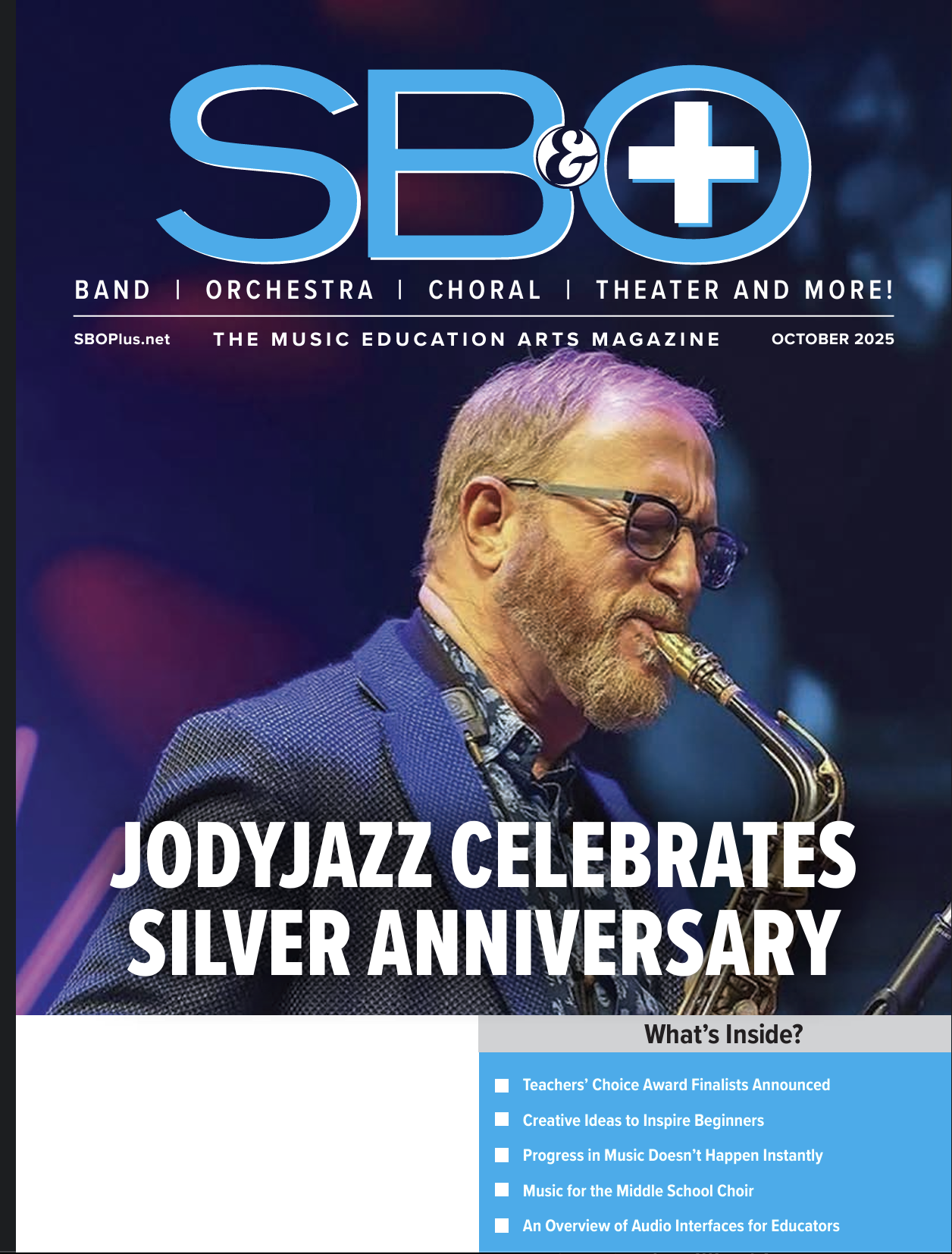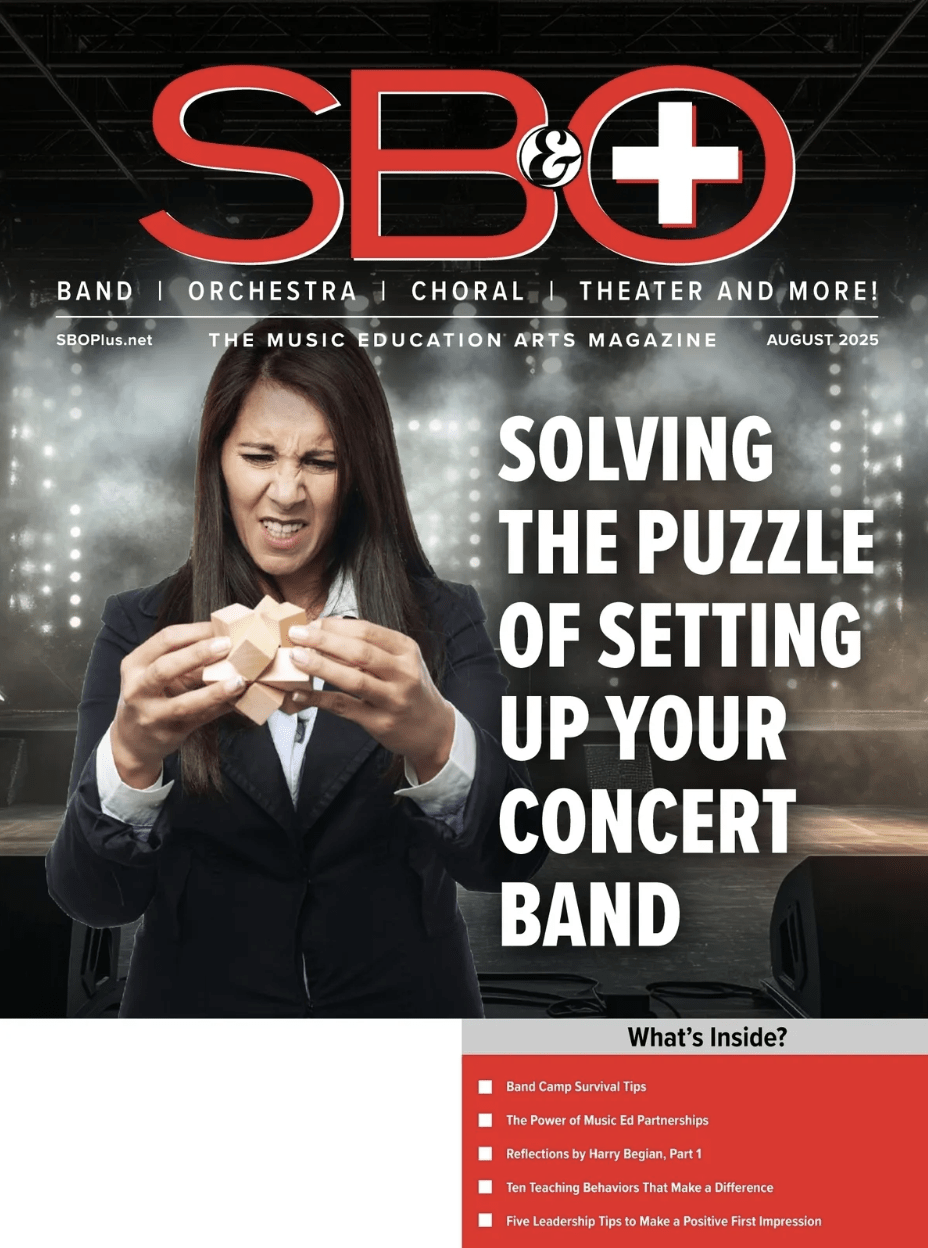 In my perusal of last month’s SBO content, I came across a comment that addressed the reuse of proven resources and materials to create structure and optimize one’s ability to manage time.
In my perusal of last month’s SBO content, I came across a comment that addressed the reuse of proven resources and materials to create structure and optimize one’s ability to manage time.
The goal was to reduce the impulse one might feel to “reinvent the wheel” class after class and year after year and to avoid inevitable exhaustion (and chaos).
In stepping back a bit from my current activities to evaluate, I decided that, yes, I am often guilty of this, albeit without the conscious motivation. “New” material and methods are more accessible for me than conscious recall, but often a large percentage of useful “out of the box” teaching can indeed be reused (effectively finding way into many lessons simultaneously).
With that awareness, the takeaway for me is that I need a better method of keeping the more useful ideas fresh, therefore reducing the effort(s) of having to find them anew. I’d like to share some of the current trends that feel effective in my studio.
Wax On, Wax Off
Though it may depend on one’s age, I think most people will recognize the cultural reference “wax on-wax off” from the film The Karate Kid. For those who don’t, the phrase comes from a scene in which the student is required to perform the task of waxing his instructor’s vehicle. The physical movements required for successfully completing this task serve to benefit the student’s skill in karate, though at the time it is hard for the student to see the wisdom and appreciate how waxing a car can be construed as “training.” But, oh, it does. Many of my violin students struggle physically until they develop agility and strength in muscle groups not often otherwise used in movements or supportive roles of the movements.
Exercises to Build Strength & Dexterity
For the left hand:
Thumb taps: this is a fairly standard approach to lessening the death grip of the left hand. If you are having the student try playing “thumbless,” be aware the hand can still hold a lot of tension in the spread position and/or angle back with a backwards pointing thumb. I call that “the laying down thumb” or “sleeping thumb”…we want the thumb standing up straight and awake!
Something that has proven effective to initially feel the open hand frame is to hold the violin out front and position the left hand in a “bass holding” shape where the thumb is directly behind the hand/ fingers. Have them lift the instrument to their shoulder with the other hand so the shape remains intact. This puts the thumb way under the violin’s neck but has a good feel to base movement from that doesn’t involve pressing or turning the hand from the side or collapsing the wrist.
Fingerboard “slap:” many students enjoy a good straightforward challenge, such as “how loud can you slap your fingers down in a playing position?” Make a (backwards) “L” with your left hand-placing your thumb tip under the neck. Slide back to 1st position and slap all four fingers down on the fingerboard together. The stronger the muscles and coordination of the finger-dropping, the louder the slap. This can also be applied to the struggle of playing open string-to-3rd fingers coming down the scale.
Knuckle “knock:” this is when students use the base knuckle of the first finger as a contact and squeeze shut the hand around the neck. I instruct students to use the primary bending knuckle and a dropped hand with less “boxiness” in the fingers. To remember that, have them periodically knock that knuckle on the first finger against neck. When done solidly, the bone knocks out a pretty obvious sound. It takes coordination.
For the right hand:
The talking hand: when you were young, did you ever draw eyes on your hand and make it into a talking hand puppet? This is a great thing to do with kids when teaching the bent and open thumb as it touches the bow hair. The thumb must be in the position of the “open mouth.” Flipped upside down, the thumb should be roughly pointed up. Using the talking hand helps to unlock that thumb and relaxes the bow grip.
Arm Glides: The Infinity Symbol
As most string teachers agree, the movements used together to create a flexible and intentional bowing apparatus are fairly unique to its own purpose. Stationary or individual aspects of a bow stroke can be likened to many things for communication and example. The nature of the bow change motion and how it prepares for opposite direction in anticipation of the change is hard to liken to other uses of the body. What about painting, such as in-home repair and carpentry (to paint cabinets, fences, walls, or- if assigned-a canvas or piece of wood)?
Both the top-to-bottom and side-to-side motions use the front and back of the brush and mimic (at their apex) the bow change. It uses some otherwise possibly dormant muscle groups (according to some very sore students after several layers of painting alternating directions). The assignment was to use a bright color and then cover it up with white gesso. Then repeat. The results were very good.
















